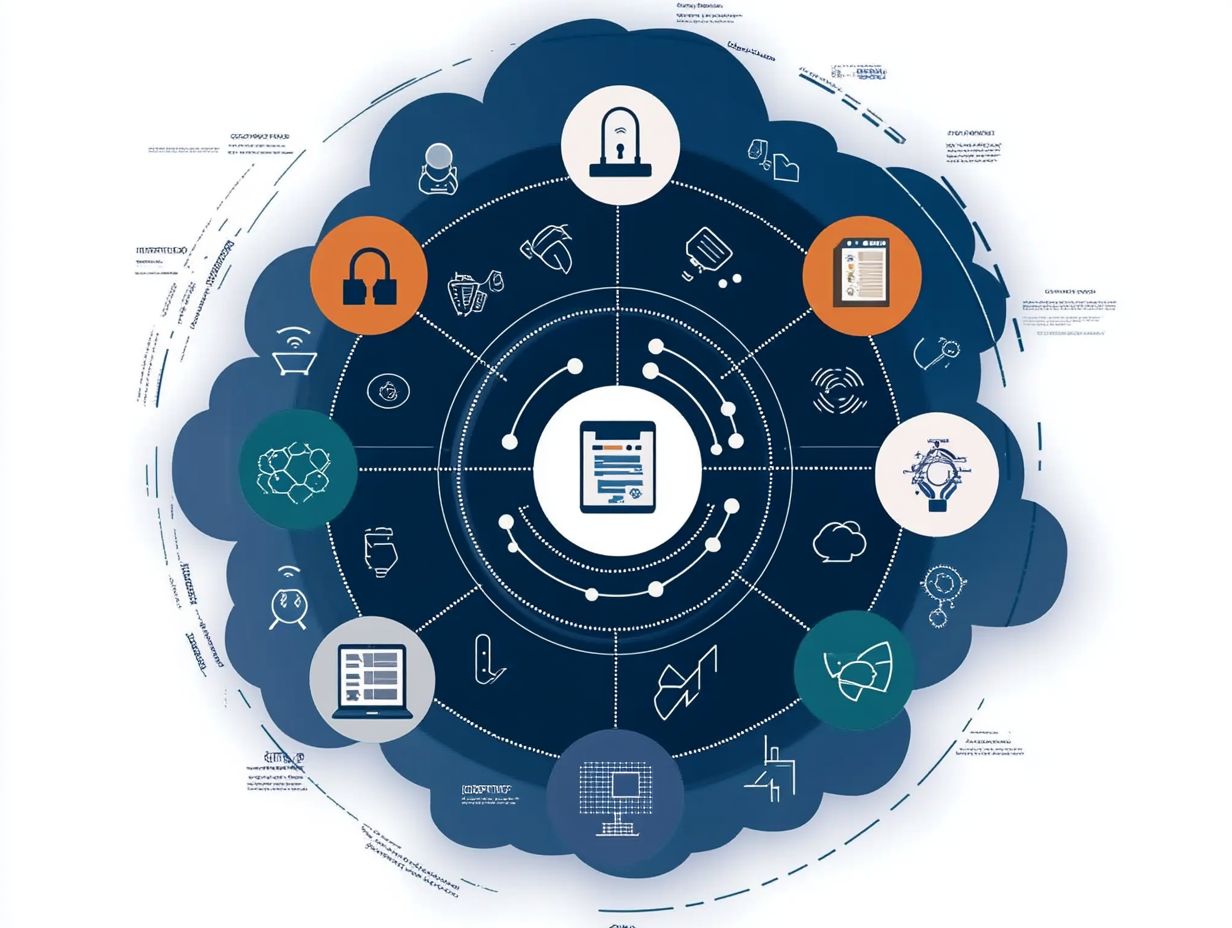5 Steps to Optimize Your Cloud Security Posture
In today s digital landscape, securing your cloud environment is more critical than ever. As you increasingly rely on cloud services, discover five powerful steps that will sharpen your defenses and protect your cloud environment today!
This article presents five steps to help you assess your current defenses, identify potential risks, and implement robust authentication measures. You ll explore why optimizing your cloud security is vital, common threats to watch for, and strategies to ensure compliance.
With the right practices in place, you can effectively safeguard your data and cultivate a culture of security awareness within your team. Dive in to uncover insights that can significantly shape your cloud security journey.
Contents
- Key Takeaways:
- 1. Assess Your Current Security Posture
- 2. Identify and Prioritize Risks
- 3. Implement Strong Authentication Measures
- 4. Regularly Monitor and Update Security Protocols
- 5. Train Employees on Cloud Security Best Practices
- Why Is It Important to Optimize Your Cloud Security Posture?
- What Are the Common Security Threats in the Cloud?
- How Can a Business Ensure Compliance with Regulations?
- What Are the Benefits of Implementing a Strong Cloud Security Posture?
- What Are the Key Components of a Strong Cloud Security Posture?
- How Can a Business Continuously Improve Their Cloud Security Posture?
- Frequently Asked Questions
- What does it mean to optimize your cloud security measures?
- What are the 5 steps to optimize your cloud security measures?
- Why is it important to optimize your cloud security?
- What security threats should I watch for?
- How can I assess my current security level?
- What tools and strategies can I use to enhance my cloud security?
Key Takeaways:

- Assess your current security posture to understand vulnerabilities and potential risks.
- Prioritize and address potential risks to mitigate security threats.
- Implement strong authentication measures to ensure secure access to your cloud resources.
1. Assess Your Current Security Posture
Assessing your current security posture is the first step in crafting a robust cloud security strategy. This helps you spot weaknesses in your security, analyze your controls, and ensure compliance with standards like ISO 27001, all while managing security risks within your cloud environments. For further guidance, consider reviewing how to implement cloud security best practices.
By utilizing techniques such as penetration testing and vulnerability scanning, you can conduct a thorough evaluation of your existing security measures and pinpoint specific gaps in your protection. This evaluation strengthens your security framework and helps you develop a clear and actionable roadmap for addressing deficiencies.
Leveraging vulnerability management tools can significantly elevate your overall security posture by providing continuous monitoring and automated alerts for potential threats.
In the realm of cloud environments, understanding the shared responsibility model what security responsibilities you have versus what your cloud provider takes care of is vital. Automated compliance tools can streamline your adherence to regulatory requirements, fostering a more resilient security architecture for your organization.
2. Identify and Prioritize Risks
Identifying and prioritizing risks is paramount for effective cloud security. By honing in on the most pressing security threats linked to your cloud services, you can ensure compliance with essential regulations.
To accomplish this, conducting a comprehensive risk assessment is essential, employing both qualitative and quantitative analysis methods. Qualitative analysis involves gathering insights through interviews and surveys, allowing you to understand potential vulnerabilities and their consequences.
On the other hand, quantitative analysis uses measurable data to calculate risk probabilities and impacts, delivering a clear picture of your exposure.
Recognizing the unique security challenges within multi-cloud environments is crucial, as it enables you to address specific vulnerabilities arising from diverse providers and configurations.
Aligning your risk prioritization with overarching business objectives enhances security compliance and strengthens your organization s resilience in an increasingly complex digital landscape.
3. Implement Strong Authentication Measures
Implementing strong authentication measures is crucial for safeguarding your cloud applications. Effective identity and access management significantly reduces the risk of security incidents, ultimately enhancing your overall cloud security.
To achieve this, consider adopting multi-factor authentication (MFA). This method adds an extra layer of verification, requiring users to provide multiple forms of identity proof a simple yet robust way to bolster security.
Single sign-on (SSO) can transform the user experience by allowing access to various applications with just one set of credentials. This alleviates password fatigue and mitigates the risks associated with weak passwords.
Role-based access controls are another critical component, ensuring that users can only access information relevant to their job functions. This minimizes exposure to sensitive data and strengthens your security posture.
By adhering to these best practices, you’ll not only fortify your identity management systems but also equip them to effectively counter potential threats, fostering a more secure cloud environment.
Act now to secure your cloud applications!
Start implementing these steps immediately for better security.
4. Regularly Monitor and Update Security Protocols

Regularly monitoring and updating your security protocols is essential for maintaining a strong cloud security posture. This makes it easier for you to detect and respond swiftly to potential security incidents, ensuring you stay one step ahead.
By staying vigilant, you can spot new vulnerabilities and threats in the ever-evolving digital landscape. Using teams that monitor security threats and automated tools allows you to monitor in real-time and implement proactive measures and timely updates to your security frameworks.
Keeping your security protocols current is crucial for adapting to new threats. This adaptability lets you develop strong incident response mechanisms, helping you address breaches quickly before they escalate into significant issues.
5. Train Employees on Cloud Security Best Practices
Training your employees on cloud security best practices is vital for reducing human error, which often contributes to security incidents and breaches in cloud environments.
Utilizing interactive workshops, comprehensive e-learning modules, and regular drills can greatly enhance your workforce’s awareness of potential security threats. Engaging employees through these diverse formats keeps the information fresh and accommodates different learning styles, ensuring a broader understanding of the protocols.
Cultivating a security-conscious culture within your organization is essential. This enables employees to take ownership of their responsibilities and adhere more closely to established security protocols, leading to a much safer cloud environment.
Why Is It Important to Optimize Your Cloud Security Posture?
Optimizing your cloud security posture is crucial for safeguarding sensitive data and infrastructure. By implementing 5 strategies for effective cloud security management, you minimize security risks, enhance compliance, and build trust with clients and stakeholders. This commitment to strong cloud security practices shows your dedication to protecting what matters most.
Neglecting this vital aspect can lead to severe consequences, such as heightened vulnerability to data breaches that jeopardize customer information. These breaches could result in costly legal ramifications and swiftly erode customer trust, harming your brand reputation and financial performance.
A compelling case study from a prominent financial institution showed that adopting a strong security posture led to a remarkable 70% reduction in security incidents over two years.
Statistics reveal that organizations prioritizing their security posture face significantly lower data breach costs. By investing in this area, you re not just protecting data; you re actively fortifying your brand’s integrity and future success.
What Are the Common Security Threats in the Cloud?
Common security threats in the cloud include data breaches, insider threats, and insecure application interfaces. If not properly managed by both cloud providers and organizations, these threats can lead to serious security incidents that impact cloud security.
These threats can appear in various forms. Cybercriminals might exploit vulnerabilities in application programming interfaces (APIs) to gain unauthorized access to sensitive data. Disgruntled employees could intentionally leak confidential information, while data breaches might arise from weak passwords or misconfigured storage solutions.
As these security threats evolve, it becomes essential for you and your cloud providers to adopt a holistic security strategy. This strategy should include continuous monitoring, strong encryption protocols, and comprehensive employee training, ensuring every aspect of your cloud architecture is fortified against potential exploits.
Don t wait for a breach to take action! Start implementing these strategies now to protect your valuable data.
How Can a Business Ensure Compliance with Regulations?

Act now! Conduct thorough risk assessments to avoid future pitfalls. Implement appropriate cloud technologies and continuously monitor your security compliance status in line with established standards like ISO 27001, a standard for managing information security.
Understanding regulatory requirements is vital, as rules can be different for each industry and area. Engaging automated compliance tools can streamline this process, providing real-time insights into your compliance status and highlighting potential vulnerability areas.
Regularly reviewing your security protocols is essential to combat evolving threats. Integrating security best practices will enhance your overall compliance efforts.
By fostering a culture of compliance and vigilance, you not only protect your assets but also build trust with clients, employees, and stakeholders. This positions you as a leader in your field.
What Are the Benefits of Implementing a Strong Cloud Security Posture?
By implementing a robust cloud security posture, you gain many benefits, including enhanced data protection, improved incident response capabilities, and increased security compliance. To further strengthen your efforts, consider building a cloud security culture, as these elements work together to safeguard your organization’s assets.
Beyond these immediate advantages, adopting a comprehensive security framework significantly minimizes the risks tied to data breaches and cyber threats. This approach fosters a secure environment that instills confidence in your clients and stakeholders.
When you prioritize security, you not only mitigate potential losses but also bolster your reputation. This can lead to increased customer loyalty and trust. Streamlining operations and automating compliance processes allows you to allocate resources more effectively, ensuring a proactive stance against emerging threats.
Ultimately, these advantages contribute to greater efficiency, reduced costs associated with incidents, and sustained growth in an increasingly competitive market.
What Are the Key Components of a Strong Cloud Security Posture?
A strong cloud security posture is essential for every business. It relies on key components, including effective security posture management, robust security controls, thorough vulnerability management, and key elements of a cloud security strategy tailored to combat potential threats.
These elements work in unison to craft a comprehensive defense strategy against the ever-shifting landscape of cyber threats. Security posture management is pivotal, offering continuous monitoring and assessment of your organization s security status. This ensures that vulnerabilities are identified and addressed without delay.
Robust security controls lay down the essential safeguards to protect sensitive data and maintain regulatory compliance. Thorough vulnerability management is vital for pinpointing potential weaknesses before exploitation, while advanced detection and response capabilities equip you to react swiftly and effectively to any incidents.
Together, these components create an interconnected framework that not only strengthens your cloud environment but also enhances overall resilience against attacks.
How Can a Business Continuously Improve Their Cloud Security Posture?
You can continuously enhance your cloud security posture by regularly updating your security strategy, conducting ongoing risk assessments, and adopting best practices to enhance your cloud storage security to stay ahead of the ever-evolving threat landscape.
Establishing a robust feedback loop during your security assessments is crucial. This means analyzing past incidents and integrating the lessons learned into future strategies. By doing so, you can identify vulnerabilities and strengthen your defenses.
Investing in employee training is another essential component, as it helps cultivate a proactive security culture. When your team members are well-versed in security protocols, they become the first line of defense, significantly enhancing your organization s overall security framework. Together, these practices bolster resilience and foster a sense of collective responsibility.
Frequently Asked Questions

What does it mean to optimize your cloud security measures?
Optimizing your cloud security means taking steps to protect your data and applications. This involves using understanding cloud security best practices and tools to guard against threats.
What are the 5 steps to optimize your cloud security measures?
Follow these 5 steps:
- Assess your current security level.
- Define your security needs.
- Implement necessary controls.
- Monitor your security continuously.
- Improve your security over time.
Why is it important to optimize your cloud security?
Securing your cloud data protects against breaches and cyber attacks. It also helps you comply with regulations and build customer trust.
What security threats should I watch for?
Be aware of common threats like data breaches, insider attacks, malware, and misconfigured cloud resources.
How can I assess my current security level?
Start with a full security audit of your cloud setup. Evaluate your controls, find vulnerabilities, and check your network and application logs to implement ways to enhance cloud security for remote teams.
What tools and strategies can I use to enhance my cloud security?
Consider using encryption, multi-factor authentication, and security information and event management (SIEM) systems. Regular training for employees is also essential.






